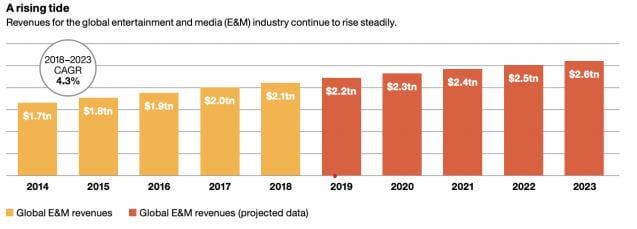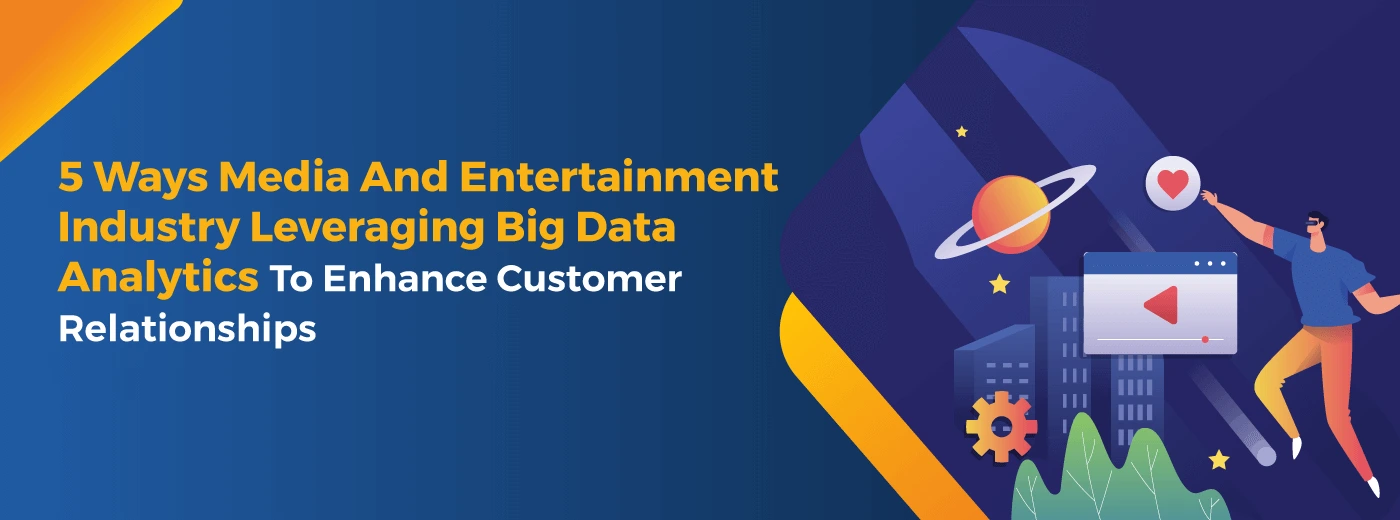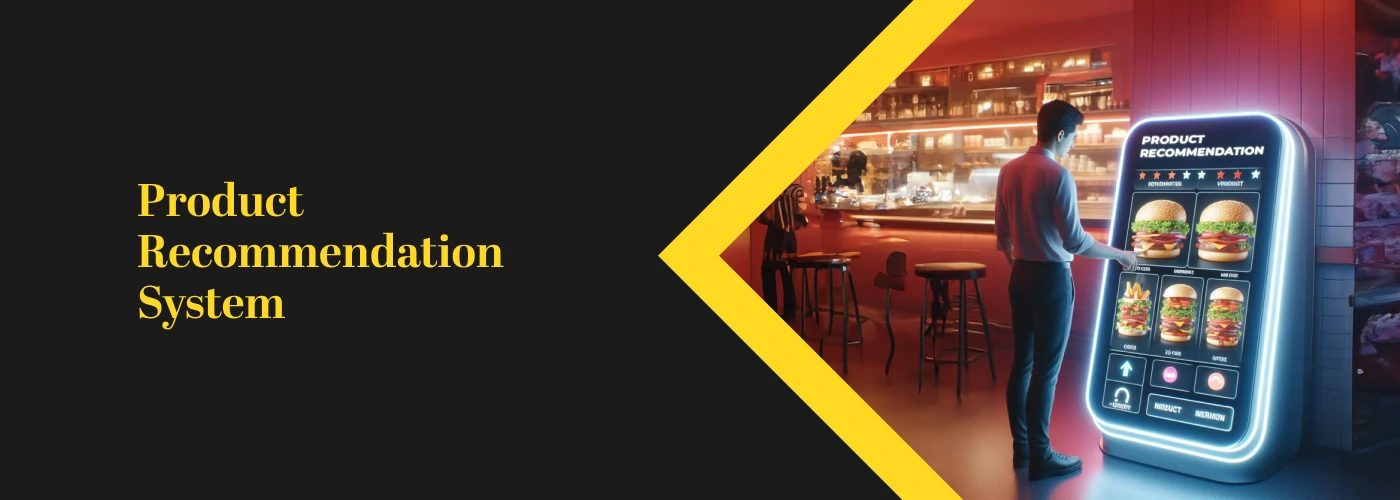The rapid advances in the internet, digital content processing, IT, and cloud technologies allowing content curators and distributors in the entertainment and media industry to work more closely and effectively to offer consumers with an ever-increasing array of options. All of this is happening at an exponential rate, thus increasing the scope of consumer-friendly services being introduced.
Consumers today can select when and what they want to watch using advanced set-top boxes or just by downloading content on-demand over the internet. Due to this trend, Entertainment and Media organizations are now struggling with information silos, legacy business models, and legacy infrastructure as they seek to gain an understanding of how well their offerings and content are matching the demands of customers.
In the current scenario, Media and Entertainment companies seek to differentiate themselves by presenting entertainment and content that their consumers want to ingest. For doing this, they must have a better understanding of their customer, including when and how customers select content and offerings. And that's where big data comes into play.
With the entertainment and media industry evolving at an exponential rate, there are twin needs that are driving the industry in the present scenario. These "twin needs" are to generate more revenue and reduce operating costs from increasingly diverse, ultra-competitive, and uncertain markets. Today digital media and smartphones have become a significant source of entertainment for the population around the globe. As a result, media distributors and broadcasters embrace big data analytics to establish a connection with their customers.
The global media and entertainment industry is set to grow at a 4.4% CAGR through 2020 to reach just under $2 trillion this year, according to PwC.

Source: PwC
Big data in media and entertainment is not only assisting businesses to gain hidden insights into consumer behavior but is also helping the delivery of personalized content. Moreover, it is helping to drive digital transformation and utilize not only access data but also current sources of data from both outside and inside the organization. Hence, for companies in the media and entertainment industry, big data holds the key to drive profitability.
Excavate interesting statistics and uncover hidden insights into customer behavior with our big data analytics solutions.
In this article, we will explore numerous ways - how big data is helping the media and entertainment industry make sense of the oceans of data that gushes in from multiple sources. Take a dig.
How Big Data Is Making Media And Entertainment Companies Competitive
1. Predicting What Your Audience Want
Traditionally media content was curated only in limited formats. But in the current scenario, they have got replaced by myriad media services like live streaming, pay-per-view, and much more. In content delivery across these formats, media distributors also collect humongous amounts of user data. Big data in the entertainment and media landscape can give an in-depth understanding of the preferences and behavior of consumers. For instance, analytics in media and entertainment sectors has helped a significant media channel to excavate numerous interesting statistics about its users, including insights on the type of videos viewers watch and the device they utilize for video streaming. This technology can also be leveraged to understand audience behavior, and syndicate content is closely aligned to their viewer preferences.
2. Provides Insights Into Customer Churn
The most significant challenge for media and entertainment organizations today is to devise strategies to deal with the risk of customer churn. Big data in the entertainment and media industry has helped combine and make sense of all the user data from disparate sources such as social media. With the emergence of Big Data in the M&E landscape, it is now attainable to uncover reasons that drive customers to unsubscribe and subscribe to any particular platform or channel. Actionable insights into responses towards subscription and pricing models can also be drawn with big data. Leveraging the potential of big data- content pricing, media content, and even delivery modes can be tailor-made to reduced customer churn.
3. Optimizes Scheduling Of Media Streams
According to Statista, 2.62 billion people have a social media account. The exponential growth of digital media distribution platforms has reduced the barrier that existed between distributors and end-users. With big data in M&E, reaching the end-users directly without any conciliator has become apt. Furthermore, big data analytics has assisted media organizations to connect with the audience directly via scheduled media streaming and maximize their profits. Additionally, big data in the M&E industry has helped identify the exact content which customers would want to engage on a scheduled basis.
4. Much Needed Boost To Advertisements
While digital advertising is in a golden age now, the challenge is to sustain viewability and engagement. Effectively, all media platforms compete for the same eyeballs while dealing with attention dilution, and consequently, digital ad effectiveness metrics are becoming increasingly important to advertisers. Big data analytics can again play a key role in assessing the impact of various factors such as ad type, page format, ad location concerning different page elements, scroll parameters, page interaction parameters (hover, click, etc.), page dwell time, etc. on improving ad viewability for digital properties and in proposing relevant strategies to improve upon ad viewability and customer engagement with the ad. Effective analytics can also help optimize ad inventory by predicting the platforms and devices that traffic will emanate from, enabling media companies to better monetize the value of their digital ads through tighter segmentation and ad targeting across visitors originating from social media or third-party websites.
5. Effective Content Monetization
Media streaming platforms need to make sure that the content they invest in, will be successful among their audiences and deliver an ample ROI. To assess the potential success of various media assets and projects, media organizations are using big data analytics. One of the foremost exampless is- Netflix investment in an American version of the British Show, House of Cards, utilizing insights captured from big data analytics. By discovering the potential success of the show, Netflix made a substantial investment that paid off huge dividends. In the same way, leading media company Warner Brothers has invested in predictive analytics technology to predict the success of their movies. The organization is using this technology to guide its decisions when investing in new movie ideas.
How We Can Help?
Polestar Solutions holds expertise in Data Analytics services. We've helped numerous enterprises reap the real benefits of this growing technology, deriving actionable, intelligent insights from unstructured, complex data with minimum effort to drive- market excellence, competitive readiness, and success.



